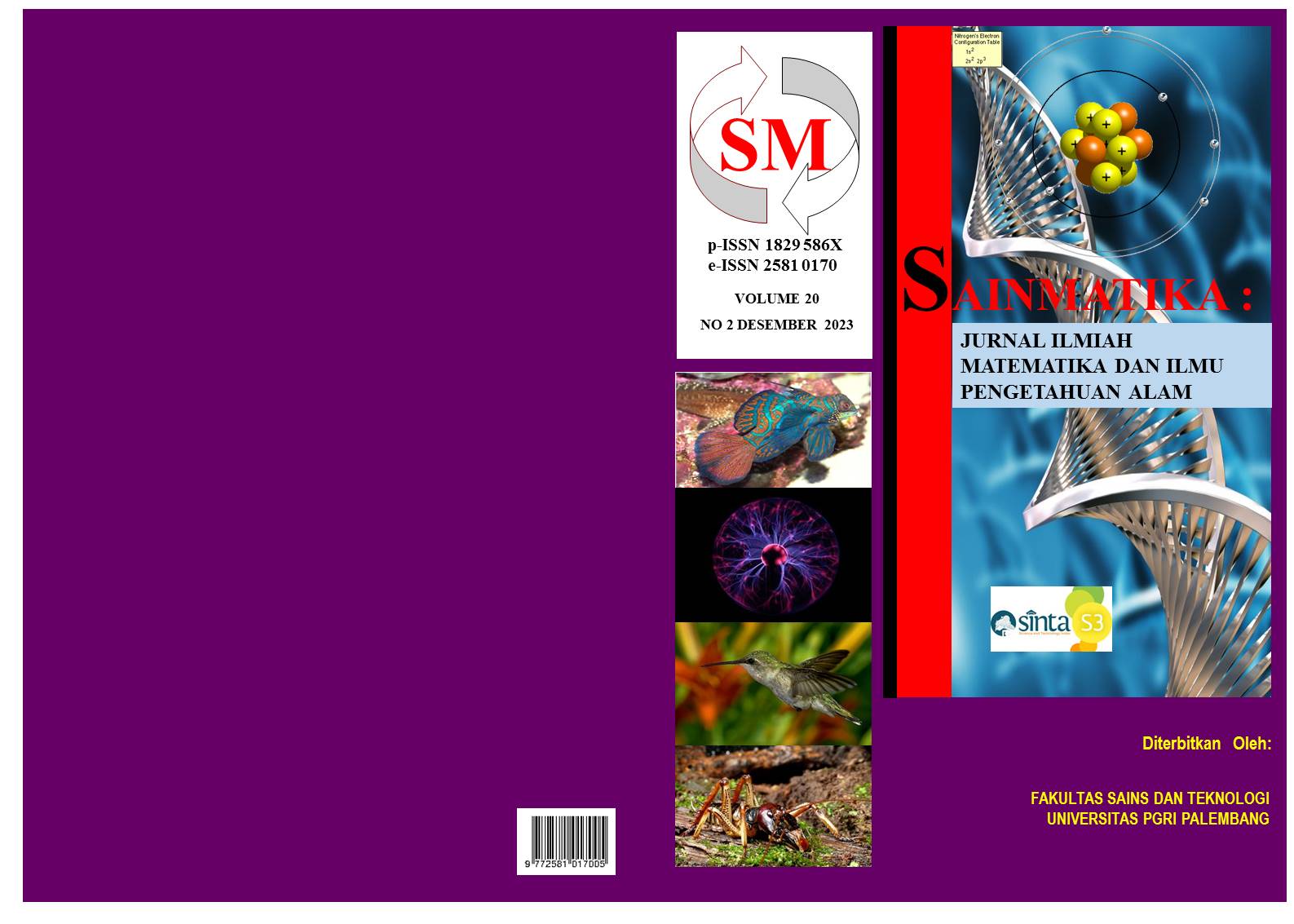The Effect of Carbon on Chitosan-ZnO Composites as Fabric Mask Coating Materials
DOI:
https://doi.org/10.31851/sainmatika.v20i2.12651Keywords:
Zinc Oxide, chitosan, activated carbon, Composites, MasksAbstract
Increasing the effectiveness of cloth masks can reduce the use of disposable medical masks which creates a new waste problem. In this research, the synthesis of zinc oxide nanoparticles was carried out using the precipitation method through the reaction between zinc nitrate and phosphoric acid as one of the ingredients in the chitosan-ZnO/C composite mixture. The carbon source is obtained from activated coconut shell carbon using sodium hydroxide. X-ray diffractometer (XRD) testing was carried out to determine the phase content of the synthesized carbon powder. XRD testing was also carried out on synthesized ZnO particles to determine the occurrence of phase transformations and to determine the quantitative and qualitative characteristics of the material. Fourier Transform Infrared testing was also carried out to observe functional group bonds formed in carbon compounds. Composite materials that have been successfully made will then be tested for hydrophobicity by calculating the contact angle. The results of this study indicate that the synthetic base material has been successfully carried out and the composite has been successfully made. The highest water contact angle is 106o was found in the chitosan/ZnO composite sample with a ratio of 2:1 and a mass variation of 0.05 gr active carbon.
References
Arief, M. (2011). Sintesis dan Karakterisasi Nanopartikel Seng Oksida (ZnO) dengan Metode Proses Pengendapan Kimia Basah dan Hidrotermal untuk aplikasi Fotokatalis. Depok: Universitas Indonesia.
Becheri, A., & Bagliani, P. (2008). Synthesis and characterization of zinc oxide nanoparticles: application to textiles as UV-absorbers. Journal of Nanopart Research, 679-689.
Darminto, Baqiya, M. A., & Asih, R. (2018). Pengembangan Bahan Karbon dari Biomassa . Surabaya: ITSPRESS.
Erlangga, F. (2021). Waste To Funcional Materials: Masker Superhydrophobic, Anti Bakteri, dan Proteksi Sinar UV. Gresik: Universitas Internasional Semen Indonesia.
Eva Novarini, T. W. (2011). Synthesis Of Zinc Oxide (ZnO) Nanoparticles Using Surfactant As A Stabilizing Agent And It’s Applications In Antibacterial Textiles Fabrication. Arena Tekstil, 81-87.
Fadhila, K. N., & Maharani, D. K. (2022). Preparation and Characterization of Chitosan-ZnO as Hydrophobic Agent in Cotton Fabrik. UNESA Journal of Chemistry, 69-76.
Farouk, A. M. (2012). ZnO Nanoparticles-Chitosan Composite as Antibacterial Finish for Textiles. International Journal of Carbohydrate Chemistry.
Harsono, H. (2022). Sintesis Partikel Nano Seng Oksida (ZnO) Doping Mangan (Mn) dengan Metode Kopresipitasi dan Karakteristik Kekristalan serta Sifat Magnetik. Tangerang: Pascal Book.
Haryono, A., & S.R, N. A. (2003). Sintesis Polistirena Sulfonat sebagai Koagulan Polimer. Pusat Penelitian Kimia (P2K) (hal. 61-66). Tangerang: LIPI.
Hidayah, B. I., Damajanti, N., & Puspawiningtiyas, E. (2015). Pembuatan Biodegradable Film dari Pati Biji Nangka (Artocarpus hetrophyllus) dengan Penambahan Kitosan. Prosiding Seminar Nasional Teknik Kimia “Kejuangan”, (hal. 1-8). Yogyakarta.
Lailiyah, N., Fadhila, K. N., Ramadhani, N. I., & Maharani, D. K. (2022). Preparasi dan Karakterisasi Komposit Kitosan-TiO2/ZnO Sebagai Agen Hidrofobik dan Antibakteri pada Kain Katun. Sains dan Matematika, 51-57.
Laos, L. E., Masturi, & Yulianti, I. (2016). PENGARUH SUHU AKTIVASI TERHADAP DAYA SERAP KARBON AKTIF KULIT KEMIRI. Prosiding Seminar Nasional Fisika (hal. 135-139). Jakarta: Universitas Negeri Jakarta.
Mandar, S., & Zainul, R. (2019). SYNTHESIS AND CHARACTERIZATION OF NANO ZnO DOPED CU. Chemistry Journal of State University of Padang, 20-23.
Rofi, S. N., & Maharani, D. K. (2020). Synthesis And Characterization Of Znofor Applications Of Hydrofobic Properties In Glass. UNESA Journal of Chemistry, 111-115.
Saxena, A. (2008). An improved process for separation of proteins using modified chitosan–silica cross linked charged ultrafilter membranes under coupled driving forces: Isoelectric separation of proteins. J. Colloid Interface Sci, 252-262.
Thi, V. H., & Lee, B. K. (2017). Development of multifunctional self cleaning and UV blocking cotton fabric with modification of photoactive ZnO coating via microwave method. Journal of Photochemistry and Photobiology A:Chemistry, 13-22.
Wuntu, A. D., & Kamu, V. S. (2008). Adsorpsi Aseton, Benzena, Dan Toluena Pada Karbon Aktif Tempurung Kelapa Sebagai Pembersih Udara Ruang Tertutup. Chem. Prog, 66-70.

Downloads
Published
Issue
Section
License

This work is licensed under a Creative Commons Attribution-NonCommercial-ShareAlike 4.0 International License.








